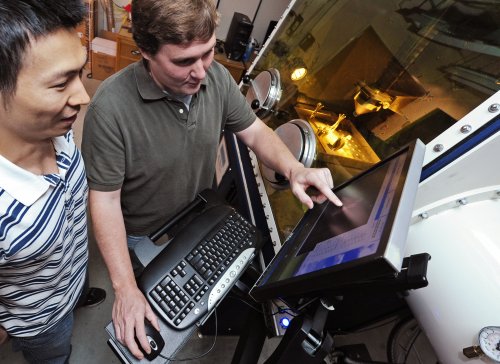Researchers are developing methods that use a laser for the production of life-prolonging stents and medical implants, while producing faster and cheaper than the methods that exist today

Dr. Moshe Nahamani
Researchers are developing methods in which a laser is used for the production of arterial stents and life-extending medical implants, while producing faster and cheaper than the existing methods today.
New methods will need to address the huge global market for artificial hip and knee joints, says Yung Shin, a professor of mechanical engineering.
The expectation for the world's population that is younger than forty years and that will need hip implants is forty million in 2010 and double that by 2030. Along with the need to increase the production rate of these implants, in view of the expected demand, the researcher notes that another goal is to produce implants that will last longer than those that exist today .
In the US, we have about two hundred thousand hip replacements a year," he notes. "They last on average about ten years, until they are replaced. In other words, if a hip joint is transplanted to a person at the age of forty, he will have to go through three or even four such replacements in his lifetime."
One of the researchers' methods works by depositing layers of a powdered mixture of metal and ceramic materials, melting the powder using a laser and immediately after, hardening each of the layers to create the appropriate parts. Since the method allows parts to be made from a single layer each time, it is perfect for the coating of titanium implants with ceramic materials that beautifully imitate the properties of natural bone, explains the researcher.
"Titanium and other metals are not equal in strength and characteristics to our natural bones, so it is necessary to coat them with an additional material to achieve additional strength," says the researcher. "However, if you are adsorbing a ceramic material on metal, you are not interested in unevenness of the coating, which causes differences in their thermal expansion and chemical composition - two factors that lead to cracks in the implant. "One of the ways to avoid this is to change the composition gradually, so that there are no sharp boundaries between the different areas." This tiered coating approach the researchers call "functional gradient coating."
Researchers use the laser coating processes to create a titanium-based porous template as well as an outer layer of calcium phosphate, designed to increase bone strength relative to existing implants. The laser coating processes allow researchers to prepare parts with more complex and complicated shapes, which will exactly fit each and every patient individually.
"Today, medical imaging scans can simply be sent to a laboratory, where the laser coating process will prepare the exact component that appears in the scan images," explains the researcher. "Instead of preparing the implant within thirty days, as is the case today due to the need to prepare a template in advance, we are able to produce it in only three days. "Thus you reduce both the production costs and the time required."
In the process, a strong bond is formed between the coating material and the titanium, steel or chrome layer. Experiments proved that the connection was seven times stronger than the required commercial standards. In addition, the researchers used computer simulations to design, test and improve their processes.
Further research is still needed to make the method commercial. The researchers also intend to examine materials with "shape-memory" and self-repairing capabilities similar to bone for life-extending implants.
The researchers are also developing a method that uses a laser with very short pulses to create arterial stents, which are metal scaffolds inserted into the arteries to keep them open, after surgeries that treat blockages or narrowing of blood vessels. Since the pulses of the laser beam are extremely short in time, the method does not cause heat damage to the stainless steel or titanium that make up the supports. This method allows the stents to expand with great precision after being inserted into the blood vessels.
